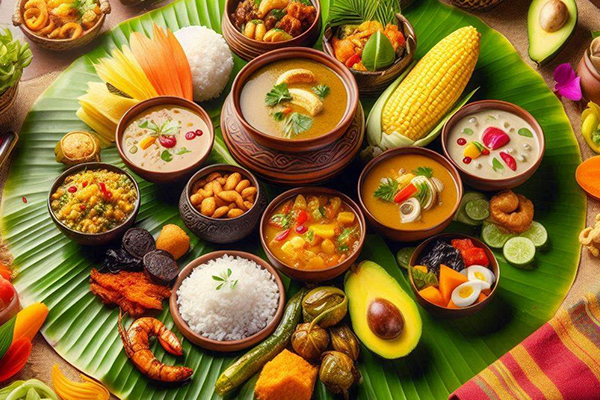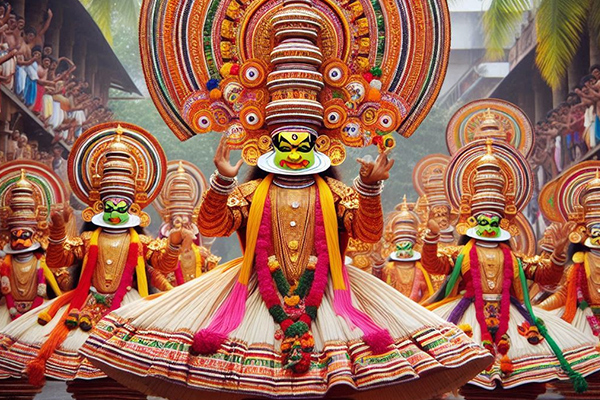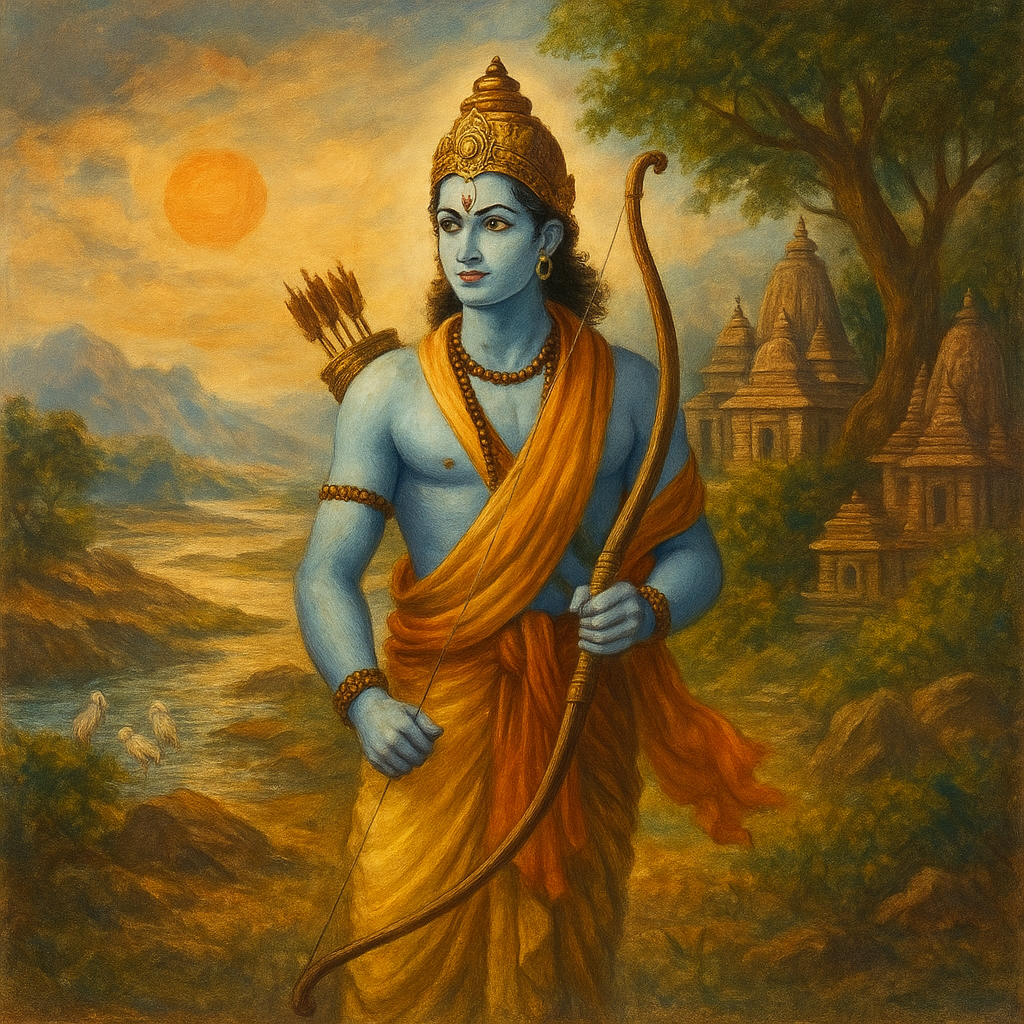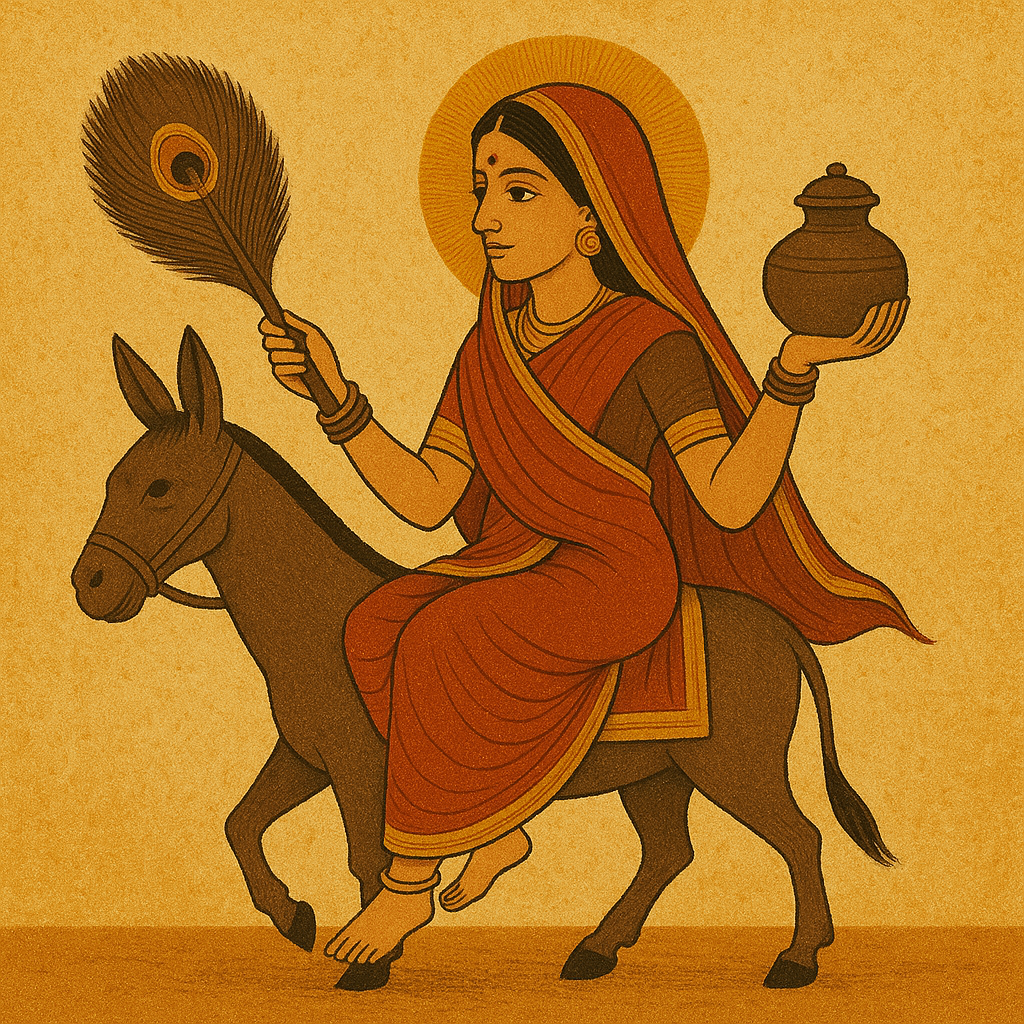
Like the major festivals of India, Onam is the most illustrious ancient festival of Kerala. It venerates the appearance of the Vamana avatar of Vishnu and the ensuing home visit of the legendary demonic Emperor Mahabali from Patala (the underworld).
Vamana had sent Mahabali to the underworld but allowed him to visit his kingdom once a year during Onam. On Thiruvonam day, the emperor is believed to visit every home. This ten-day-long festival grows with festive spirit among the locals and is celebrated with much splendor. It is celebrated in the Chingam month (Aug-Sept) of the Malayalam solar calendar. Chingam month is known as Simha month in other solar calendars and Avani month in Tamil Calendar. Thiruvonam Nakshatra prevailing in the month of Chingam is considered for the Onam celebration, and Thiru Onam Nakshatra is known as Shravana in other Hindu Calendars.
What is Onam festival?
The celebrations and festivities begin on Atham day and continue for the next ten days till Thiruvonam day. The first day of Onam is regarded as Atham (August or early September). According to the scriptures, the demon King Mahabali was the greatest king under whose rule prosperity and grandeur, according to his whims, prevailed everywhere. To finish Mahabali’s rule on earth, Bhagwan Vishnu emerged as a Vaman (short Brahmin) and tricked him into giving him whatever land he owned. King Mahabali, on his demonic deeds, was sent to a lower world; but Vishnu also granted him a boon to visit his land once every year. Onam celebrates the homecoming of the King.
When is Onam Festival? (Onam Date)
Thiruvonam on Wednesday, August 26, 2026
Thiruvonam Nakshathram Begins - 10:51 PM on Aug 25, 2026
Thiruvonam Nakshathram Ends - 12:48 AM on Aug 27, 2026
Onam comes in which season?

This holiday lasts for 10 days and is celebrated between August and September to mark the end of the monsoon and to welcome the harvest season. The festival also celebrates the homecoming of King Mahabali, the mythical ruler of ancient Kerala.
Where is Onam Celebrated?
The festival of Onam is celebrated throughout Kerala. Kerala during Onam is marked by happiness, excitement and enjoyment among all sections of people. Onam is celebrated as an outcome of reasons related to mythology and old agrarian practices.
How is Onam Celebrated?
Onam is a traditional festival originated from Kerala. Onam is one of the most religious festivals that is celebrated by the Malayali community people around the world. Various cultural events from boat races, dance forms, Rangoli, colorful art, food and traditional clothing take place during this festival.

Malayali women draw different “Pookkalam”, floral designs on the east side ground of their homes. Pookalam is a flower rangoli made with fresh yellow flowers. It is considered as a symbol of good luck.

Vallamkali is known as the Snake Boat Race. It is one of the most popular traditions of Kerala. This is a major attraction for tourists.

Pulikali is an art performed by all the men. During this tradition, performers paint their bodies like tigers and dance to the beat of drums. It is performed on the fourth day of Onam.

People invite their relatives and friends for a grand celebration called “Onam Sadya”. They cook 13 dishes including Rice, vegetable curry, curd and Payasam (sweet stew) and serve it on banana leaves. It is done on the third day of Onam. Payasam is considered as the must having dish on Onam. It is prepared with milk, rice, sugar and coconut.

People perform the dance form which is known as Kathakali and that tells the story about Hindu mythology and culture. This is mainly done by all the men, and they wear a special costume to perform this art form. Apart from Kathakali, there are other dances such as Thiruvathira, Pulikali, Kummattikali, Thumbi Thullal, Onam Kali performed during Onam.

On the tenth day of the festival, various cultural activities and festivities are held in the temples and other religious places. Elephants are decorated with ornaments and grand processions are being carried out.

The main occasion is the Thiruvonam. Avittom (third Onam) and Chatayam (fourth Onam) are also considered as days of Onam. People prepare for the departure of King Mahabali, so they clear the Pookalam. The clay statues of Onathappan are immersed in the river or the sea.
Onam & King Maha Bali Story (King associated with Onam)

Onam commemorates the homecoming of the great asura King Maha Bali from Patala Loka.
Maha Bali, the grandson of Prahalada, was a strong and learned king who respected knowledge. Once, Maha Bali was performing a yagna, when a short, young, radiant boy entered the yagna shala. Maha Bali, as was the custom, welcomed this radiant youngster and asked him what he wanted. The young boy requested that much space, as could be measured by three footsteps of his.
Maha Bali agreed at once to the chagrin of his Guru Shukracharya who cautioned him that the guest was none other than Lord Vishnu Himself.
As the legend goes, no sooner were the three footsteps granted, the young Vamana assumed a gigantic form known as Trivikrama and with the first step of his foot, measured the whole earth. Then with the second step of his foot, he measured the whole sky. These two steps covered the whole of Mahabali’s kingdom, the earth and the sky. Vamana then asked the king as to where he should place his third step.
King Maha Bali, the grandson of the greatest of the Lord’s devotees, Prahlada joyfully offered his head for the third step in utter devotion and surrender.
The Lord, recognizing his attitude of surrender blessed him and sent him to Patala with a promise of making him Indra in the next Manvanthara and that He Himself would guard the gates of Patala.
Acceding to Maha Bali’s people’s request, Vishnu granted Maha Bali permission to return to his kingdom from Patala, once every year, to be among his people. This day is celebrated as the Onam festival.
A deeper meaning
This legend of the Vamana avatar is Puranic, i.e. an expression of a deeper truth, a moral lesson from historical or scientific incidents, veiled in a story. Maha Bali was a great asura king. He was arrogant because he owned all the expanse that he could see on land and was considered invincible.
Knowledge and humility help one transcend the ego which can grow as huge as this earth and sky. Just like Vamana, ego can be conquered in three simple steps.
Step 1:
Measure the earth – Look around and be humbled by the sheer number of other living beings like you on this earth.
Step 2:
Measure the skies – Look up into the sky and be humbled by the sheer vastness and the multitude of other worlds in the cosmos and how insignificantly small we are in this cosmos.
Step 3:
Place your hand on your head – Realize that in the cycle of births and deaths not only of living beings but the cosmos itself, the time span of each of our lives is very small and the role we play in the larger picture of the order of the cosmos, is even smaller.
How to perform Onam Puja at home

Celebrating Onam at home can be a joyous and culturally rich experience. You can celebrate Onam at home by following the given steps:
Thoroughly clean and tidy up your home as a mark of respect and to welcome the spirit of King Mahabali.
Create a beautiful floral rangoli at the entrance or in the living room using fresh flowers. Start with a simple design and add more layers each day leading up to Thiruvonam.
Decorate your home with traditional items like hanging lamps (Nilavilakku), banana leaves, and other festive decor.
Take an early morning bath and wear new traditional clothes. Men typically wear a white dhoti (Mundu) and women wear a Kasavu saree.
Set up a small altar with an idol or picture of Lord Vishnu or Vamana. Light an oil lamp and offer prayers, flowers, and incense.
Cook a traditional vegetarian feast called Onam Sadhya. It includes various dishes like avial, sambar, thoran, olan, pachadi, and payasam, all served on a banana leaf.
Engage in traditional games like tug-of-war (Vadam Vali), boat races (if possible), and other local sports that are part of Onam celebrations.
Participate in or watch traditional dance forms like Thiruvathirakali and Kathakali. Play traditional music and songs related to Onam.
Invite family and friends to join the celebration. Sharing the Onam Sadhya meal together is a crucial part of the festival.
Exchange gifts and seek blessings from elders. It’s customary to give and receive new clothes and other presents during Onam.
By following these steps, you can celebrate Onam at home, embracing the traditions and festive spirit of this vibrant festival.
The Famous Onam Boat Race: (Vallam Kali)

Boat racing as a sport is famous around the world; however, India’s very own boat race is different from others. It isn’t a sport; it’s a festival and is celebrated with not just sportsmanship but as an ode to the gods. Kerala is called God’s own country, and people participate in the race to honor these gods.
Every year Vallam Kali is celebrated during the harvest festival, Onam – the festival’s rich history adorns it with the sentiment of the people of the land.
In layman’s terms, Vallam Kali is a boat race where the boats are vast and snake-like. Vallam Kali is the umbrella term for boat races held in Kerala. It is celebrated in different parts of the state.
The central legend associated with Vallam Kali dates to the 13th Century of war when one of the kings of the feudal kingdoms commissioned the construction of a war boat. The boat was called Chundan Vallam. The methods of creating the boat thus trace back to the 13th Century.
The heritage of the festival makes it an unmissable event. There are many boat races held in Kerala. Among them are the famous Nehru Trophy Boat Race in Punnamada Lake of Alappuzha and the Aranmula Snake Boat Race. Both these races have decades-old history and reasons for the celebrations.
The Aranmula Boat Race and The Nehru Trophy Boat Race are the most revered of the many boat races conducted in Kerala.
Aranmula Boat Race – This happens amidst the celebration of Arjun’s birthday. However, the race is also considered an offering to Shri Krishna. The tradition started as an ode to the snake boats that saved a devout brahmin. While delivering the food for a feast at the Shree Parthasarathy Temple, enemy factions attacked him. The snake boats of this race are called Paliyodams. Krishna gets credit for the design of these boats. Krishna is said to have come to this town in a raft of six bamboos called Aranmula.
Nehru Trophy Boat Race – This boat race gets its name due to the events that transpired in 1952; Pandit Jawaharlal Nehru, who was in attendance that year, was so transfixed by the snake boats that he leapt into one to experience it first-hand. He donated a silver trophy shaped like a snake boat, and since then, the boat race has been named the Jawaharlal Nehru Trophy Boat race.
What to do on Onam?

You may visit a Vishnu/Krishna temple and offer prayers. If a temple is not around, you can worship Him at your home in the early morning. The idols of Bhagwan Vishnu should be worshipped with sandalwood, flowers, fruits and dhoop.
You can worship Vishnu by using energized Vishnu Yantras .
One can simply meditate on Vishnu and chant His mantra: ‘Om Namo Bhagavate Vasudevaya’. This powerful mantra was given by Sage Narada to Dhruva Maharaja as described in the Bhagavat Purana (4.8.54).
You can also chant the Hare Krishna Maha-Mantra on the Tulasi bead .
You can offer flowers and chant Vishnu Sahasranamam (Thousands name of Bhagwan Vishnu). Chanting thousands of names of Vishnu or Vishnu Strotram has a purifying effect on the mind and the body. You can also play it in the morning while you engage in daily work.
You can also perform a Vishnu Sahasranama Puja under qualified Brahmins. It is a highly recommended activity on this day. The puja includes Vishnu - Lakshmi Abhishek and Pujan, Vishnu mantra Japa- 1100 times, Vishnu Sahasranama Strotra followed by Homa and Aarti.
You can wear a Ten Mukhi and a Nineteen Mukhi Rudraksha bead for they are ruled by Shri Krishna and Narayana, respectively. Wearing these Rudraksha beads on this day purifies your inner self and strengthens your willpower. They work like a shield on one's body and the wearer get immense protection from negative energies, evil eyes and psychic attacks.
Daan (Donation):
.jpg)
Donation is also beneficial during Onam. You can donate following items as per your capabilities:
Clothes
Food grains
Pitchers filled with water
and any other items to Brahmins.
Onam Significance & Story of 10 Days (2026)
Onam is celebrated to pay honor to the return of the renowned king, King Mahabali. According to Hindu legend, Mahabali was a beneficent demon king who was adored by his people. Nevertheless, his increasing influence and popularity aroused the gods' envy. In order to diminish his power, Lord Vishnu took the form of Vamana, a little Brahmin, and requested to Mahabali for a donation of three measures of land. Upon being granted, Vamana magnified his size to encompass both the globe and the sky in only two leaps. As part of the third stage, Mahabali willingly sacrificed his own head, resulting in his descent into the netherworld. In response to Mahabali's unwavering dedication and ethics, Lord Vishnu bestowed upon him a blessing to visit his subjects once every year. This yearly visit is now commemorated as the festival of Onam.
The Story and Significance of 10 Days of Onam
- Atham (Day 1): The celebration begins with Atham, a day that is regarded as sacred and beneficial. Individuals start their preparations for the extravagant festivities by tidying their residences and decorating their front doors with a Pookalam, which is a flower carpet. The dimensions of the Pookalam progressively expand each day leading up to Thiruvonam.
- Chithira (Day 2): On the second day, individuals enhance the Pookalam by including more flowers, resulting in a bigger and more vivid display. Additionally, it is a day dedicated to engaging in shopping and making necessary arrangements for the joyous festivities.
- Chodhi (Day 3): Chodhi signifies the beginning of the buying spree for Onam. Individuals purchase new garments, accessories, and presents. The Pookalam is steadily expanding in both size and aesthetic appeal.
- Vishakam (Day 4): Vishakam is regarded as the most propitious day to start the preparations for the elaborate Onam feast, also referred to as the Onasadya. The marketplaces are bustling with people purchasing veggies, fruits, and other necessary items.
- Anizham (Day 5): The renowned Vallamkali, often known as the boat race, is the main attraction of Anizham. The backwaters of Kerala see the exhilarating spectacle of snake boats racing, serving as a powerful symbol of collaboration and harmony.
- Thriketa (Day 6): On Thriketa, families begin congregating to commemorate Onam. On this day, people engage in prayers, make visits to temples, and present flowers as offerings to the deities.
- Moolam (Day 7): Moolam marks the commencement of many cultural celebrations, including customary dance exhibitions such as Pulikali (tiger dance) and Kaikottikali (clap dance). The Pookalam has become more complex and detailed.
- Pooradam (Day 8): During the festival of Pooradam, individuals craft clay sculptures of Mahabali and Vamana, which are then positioned in the heart of the Pookalam. This day is dedicated to the act of welcoming King Mahabali into their households.
- Uthradam (Day 9): Uthradam is regarded as the eve of Onam, and it is widely believed that King Mahabali makes his arrival in Kerala on this day. Individuals meticulously organise extravagant banquets, meticulously tidy their residences, and meticulously ensure that everything is in order to warmly welcome the monarch.
- Thiruvonam (Day 10): Thiruvonam is the ultimate and important day of Onam. On this day, it is claimed that King Mahabali visits every family. Onasadya, a lavish banquet of a variety of traditional delicacies presented on banana leaves, is the highlight of the day. Family members gather to honor the essence of King Mahabali by engaging in activities like games, music, and cultural events.


-in-Astrology.jpg)






.jpg)




Comments 0
Leave your thought here